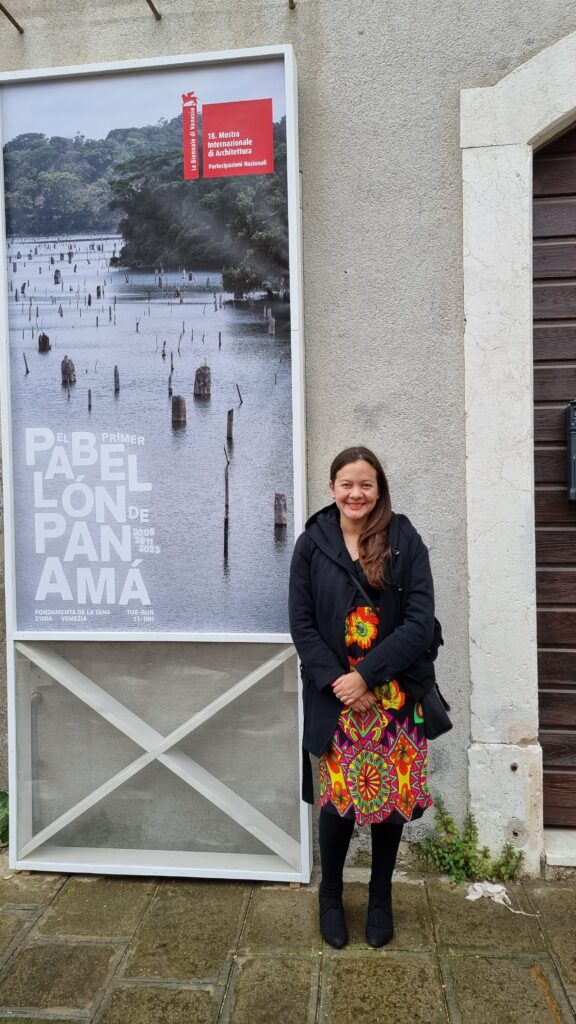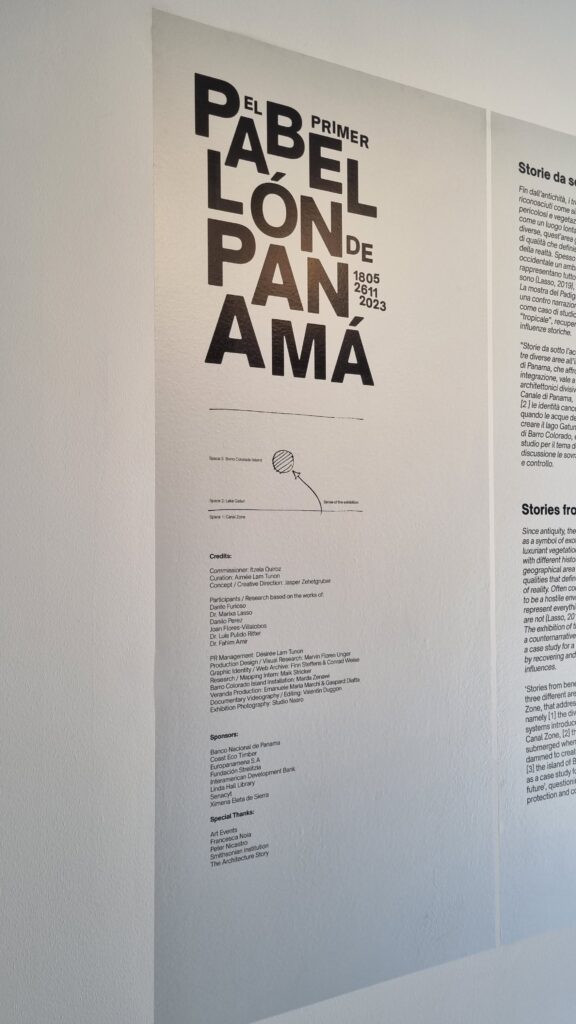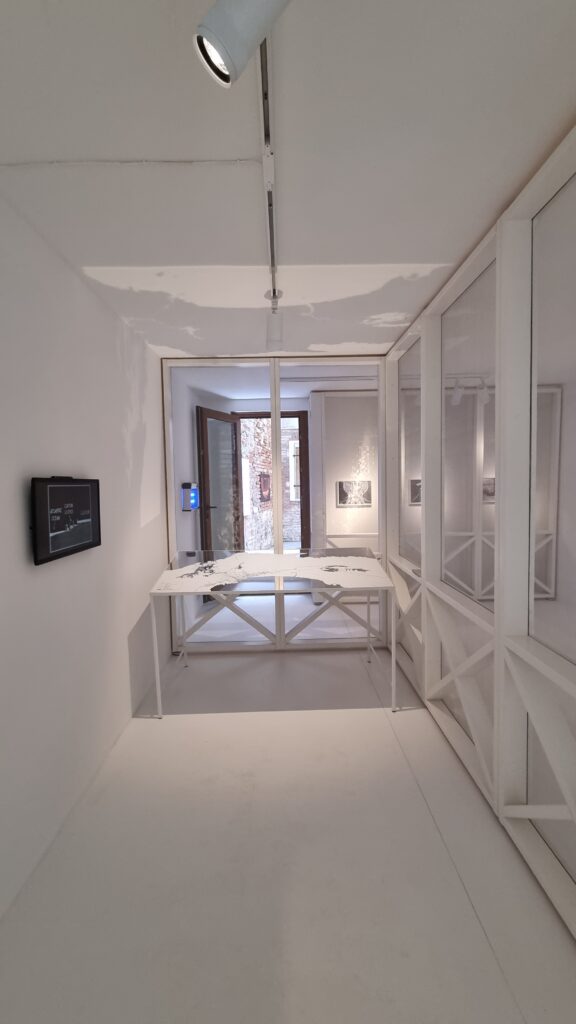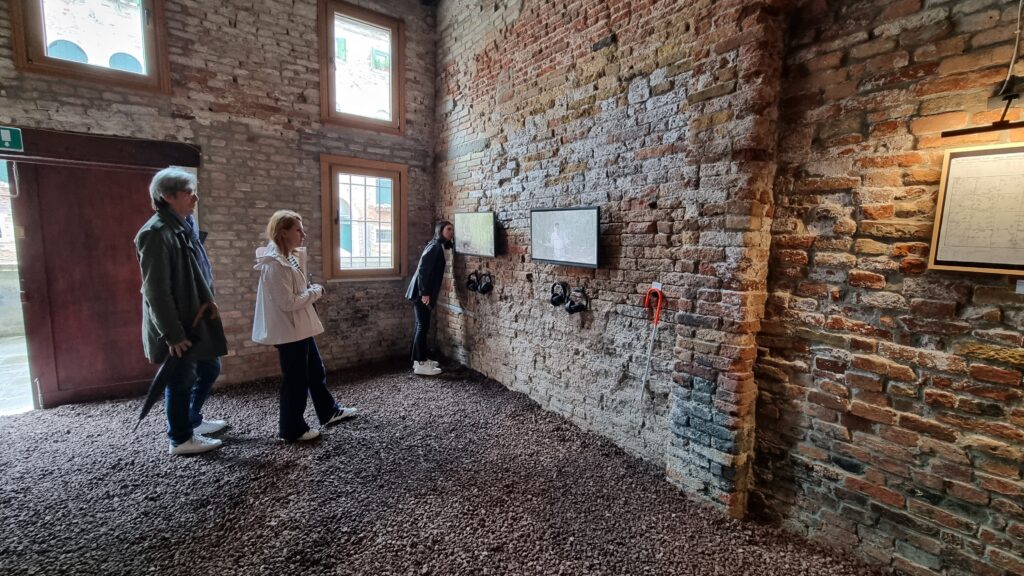“Since antiquity, the tropics have been widely recognized as a symbol of exotic beauty, dangerous animals, and luxuriant vegetation. Portrayed as a faraway place, with different histories, languages, and cultures, this geographical area represents an amalgamation of qualities that define the fantastic and mysterious nature of reality. Often considered from a western perspective to be a hostile environment to progress, the tropics represent everything that Europe and the United States are not (Lasso, 2019), the antithesis of civilized modernity. The exhibition of the Panamanian Pavilion should provide a counternarrative to this status quo, with Panama as a case study for a future vision of a ‘tropical’ nation, by recovering and connecting its various historical influences.” - Aimée Lam Tunon, Exhibition curator
For over 500 years, the isthmus of Panama, a narrow strip of land better known as ‘the land bridge between two oceans’ proved itself as a region of geopolitical importance in global transportation. Since the earliest European colonists, Panamanian history has been shaped by the recurrent theme of commerce. As Spanish influence and colonial control over the region began to disappear in the early nineteenth century, other countries started pursuing their economic interests through the construction of a canal connecting the two oceans. A first attempt was led by the French: With a death toll estimated at over 22,000 lives, mainly caused by malaria and yellow fever, Panama was immortalized as a place of danger and disease. After the failure of the French, the United States entered the new nation of Panama with a distinctive vision of imperial administration – the Panama Canal Zone.
Less a colony than an engineering enclave, a ten-mile strip of land meant to stand in contrast to its natural and social environment, defining a landscape of modernity. Within these confines, an ‘othering’ narrative and ideology led to a demarcation of sanitated areas, domestication of the jungle, racial segregation, and depopulation of the ‘zone’ from Panamanians and their cities. This ‘buffer zone’ of protection between the colonizer and the colonized is an architectural structure, able to activate wider discourses of equality, empowerment, and identity in a constantly changing environment. It creates a liminal space wherein the relationship with the land – one that is threatened because the community is alienated – becomes fundamental, stops being merely decorative, and emerges as a full character (Glissant,1989).
The first room will shift the visitors' attention toward the impacts of these controlling and dividing interventions (zones) defining the former Panama Canal Zone. Insects and mosquitoes of Venice are invited into the space through blue insect lights. Dancing shadows of these insects on the walls connect the colonizer’s perspective with Plato’s allegory of the cave: Modern assumptions about the ‘tropics’ are exposed as mere illusions observed from a distance.



Memories have an influence on self-identification and provide continuity between the past, present, and future. They turn into allusions, echoes, and reminiscences that create multiple connotations, defining the complexity of the architectural organism. Given the power of modernism in erasing histories and indigenous languages, local Panamanian communities were lost in the process of the Canal construction, resulting in the domination of a singular ideology of human progress, order, and control.
The destruction of small towns, historical areas, rural settlements, and Panamanian landscapes, evoked feelings of nostalgia for the environment that was and the desire to preserve its image in the collective memory, which is reflected in the recurring theme of the landscape in Panamanian literature. “Caribbean writers have always had only one referent available to shape the theme and the language of their works: the landscape – insular, oceanic, luxurious, mysterious, and ever-resistant to conquest and appropriation by mapping or “realistic” descriptions. (...) This is one of the basic precepts of the magical realist text. Only the magic and the dream are true because they are the only discursive elements able to present the unpresentable, to speak the unspeakable where the realistic text fails.” (Arva, 2010) Following this line of thought, the courtyard will provide a safe space for reflection, avoiding direct confrontation with colonial trauma, while subverting the western perception of the ‘tropics’ as a ‘magical’ land. Trees recovered from beneath the waters of the artificial lakes of Panama will enable the visitors to indirectly confront the traumatic history of erased communities through the canal construction (Lasso, 2019).

Barro Colorado Island (BCI) is a unique space, a hilltop that became isolated in the middle of the Panama Canal when the waters of the Chagres River were dammed to create Gatun Lake, the main passage of the waterway. Set aside by the Smithsonian Tropical Research Institute as a nature reserve since 1923, today, exactly 100 years later, this island is the most studied tropical forest in the world. Frequently advertised as a living scientific ‘archive’ and ‘laboratory’ in which the landscape became both – an object and repository of scientific knowledge. Discussing the purportedly opposing perspectives toward BCI as ‘a fragment of authentic tropical nature standing at the crossroads of the world’ and its position as ‘a shadow of the former Canal Zone’, this last room of the exhibition will question the history, inclusivity, and legacy of this tropical station.
Discussing the supposedly opposing perspectives towards BCI as "a fragment of authentic tropical nature standing at the crossroads of the world" and its position as a "shadow of the former Canal Zone," this final room of the exhibition will question the history, inclusiveness, and legacy of this tropical station.
What is its role in the conservation of local and global biodiversity and ecological research? The room will be a space of listening, to critically reflect on the connections between control and protection and to imagine a future vision for science and modernity in Panama and beyond.